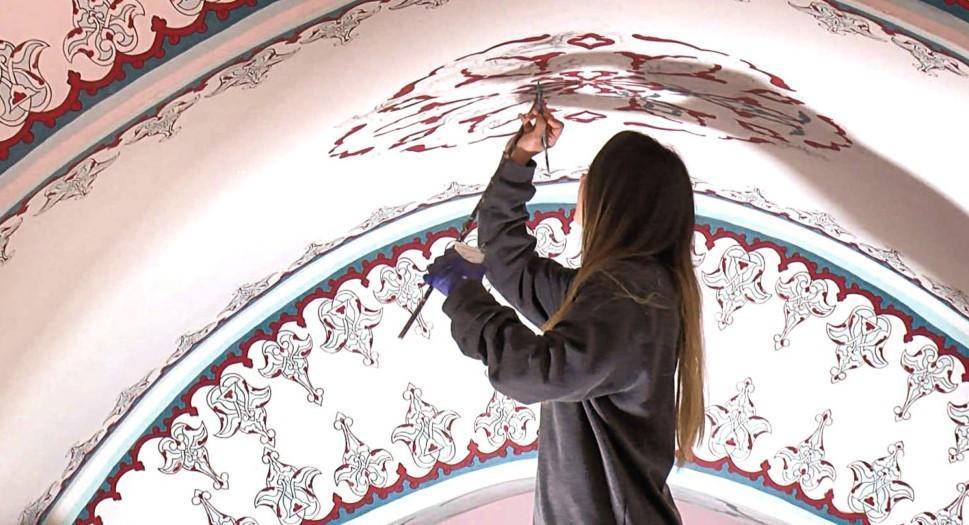
The restoration and strengthening works against possible earthquake risk in Istanbul’s historic Grand Bazaar, which have been going on for about three years, have mostly come to an end.
Architect İhsan Sarı, a member of the Scientific Board of the Grand Bazaar Restoration Program, said, “We foresee that the Grand Bazaar will survive the Istanbul earthquake in line with the information we have. The entire restoration is set to be completed by the end of this year.”
In the 562-year-old historical structure, which is home to more than 4,000 shops, most of the works carried out on infrastructure, installation, floor and main walls have been made.
Restoration officials stated that 95 percent of the works on the 27,000 square-meter ceiling and the 19th-century engravings on the walls have been finished.
Works were also carried out against a possible Istanbul earthquake. As part of the works, the cement materials covering the original wall structure were cleaned and the cracks were filled.
The supports between the arches and walls of the Grand Bazaar were renewed with aluminum and steel materials, cleaned and repaired.
Stating that the static condition of the structure was evaluated in the first stage of the restoration program, Sarı said,
“There were serious problems in some places. Technical interventions were made. As you know, the Grand Bazaar is 562 years old. Over time, it went through many serious earthquakes. It was severely destroyed in the 894 earthquake.
Afterward, the bazaar, which contained 50 inns in the past, was restored and the number of inns was reduced to 18-20.”
“Finally, in the 1980s, almost 27,000 square meters of ceiling surface inside the Grand Bazaar was plastered and ornaments were made. Of course, all of these have been changed in accordance with the documents we have.
Around 17,000 square meters of infrastructure, namely the street texture, was relaid and revived with stones extracted from the Mut district of Mersin.”
Stating that earthquake is today’s concerning subject, Sarı said, “In order to make the structure earthquake-resistant, work continues on three streets around the area we call the PTT. The Grand Bazaar has a historical identity. We cannot make these monuments 100 percent earthquake resistant. In order to do it, we have to destroy many architectural structures.”
“There was liquefaction on the ground, a soft ground. This area is of course a very old residential area, it is a filled ground. We made that floor harder. We know that the Istanbul earthquake will not be just below Istanbul, but about 20-30 kilometers south of it, in the Sea of Marmara, this could be an opportunity for us. We think that this place will survive the possible Istanbul earthquake,” Sarı said.
“With this restoration, the Grand Bazaar could survive up to 100-150 years in case it does not face disasters such as a fire or an earthquake,” Sarı added.